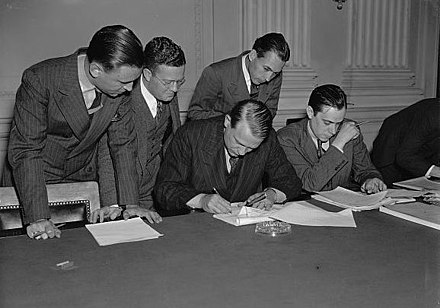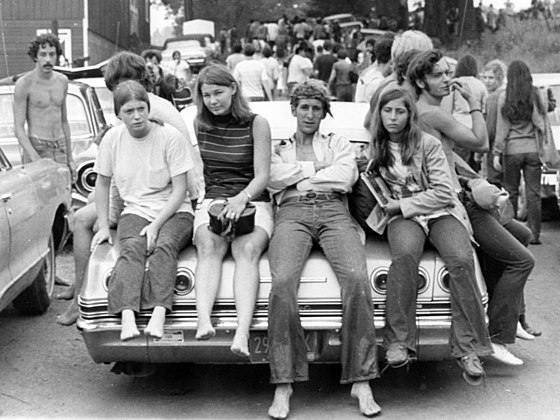<< Hide Menu
Robby May
Robby May
After World War II, the country experienced a period of economic prosperity and demographic changes. At the same time, the Civil Rights Movement gained momentum, leading to increased social and political equality for African Americans and other minorities. The Cold War between the United States and the Soviet Union also had a significant impact on society during this time period.
Explain the context for societal change from 1945 to 1980.
The Cold War
During the Cold War, the United States engaged in a global struggle with the Soviet Union to limit the spread of communism and promote democracy and capitalism. This led to a focus on national security and the development of a military-industrial complex, as well as efforts to contain Soviet influence through foreign policy and military alliances such as NATO.
Cold War policies, particularly those related to national security and the containment of communism, led to public debates over the proper balance between government power and individual rights. This included discussions about the limits of executive power, the use of surveillance and other measures to protect national security, and the rights of individuals suspected of being involved in subversive activities.
Additionally, the Cold War led to a climate of political repression and paranoia, with accusations of communist infiltration into the government, media, and other institutions. This led to the rise of the Red Scare and the House Un-American Activities Committee (HUAC) which investigated people suspected of having ties to the Communist Party. Civil liberties such as freedom of speech, press ,and assembly were also affected by this political atmosphere.

Image Courtesy of Wikipedia
The United States also sought to promote a free-market global economy through initiatives such as the Marshall Plan and the creation of international financial institutions such as the World Bank and the International Monetary Fund. Additionally, the United States played a major role in the creation of an international security system, including the establishment of the United Nations.
Civil Rights Movement
Seeking to fulfill promises made during the Reconstruction era following the Civil War, civil rights activists and political leaders in the United States worked to end segregation and achieve greater equality for African Americans. These efforts included legal challenges to segregation in education and other areas, as well as grassroots activism and protests.
One of the most significant achievements of the Civil Rights Movement was the passage of the Civil Rights Act of 1964 and the Voting Rights Act of 1965. These laws prohibited discrimination on the basis of race in voting, education, and the workplace, and helped to end legal segregation.

Image Courtesy of Wikipedia
The Black Power Movement was a more radical movement that emerged from the Civil Rights movement. It emphasized racial pride and self-determination, and sought to challenge white supremacy and the systemic racism that affected African Americans.
Postwar Demographic Changes
The post-World War II period saw a strong economic boom in the United States, characterized by low unemployment, high GDP growth, and widespread prosperity. This led to the creation of a large and growing middle class, which had a significant impact on American society and culture.
Furthermore, there was a sense of national unity and pride as the US emerged as a superpower after the WWII, this was reflected in the popular culture of the time, such as the "American Dream" and the "suburban lifestyle".
The 1960s counterculture was a movement of young people who rejected the traditional values and norms of American society. They embraced a more liberal, anti-establishment, and anti-war outlook, and sought to create a new society based on peace, love, and freedom.

Image Courtesy of Wikipedia
Politics
Liberalism, which emphasizes individual rights and freedoms and a limited role for government, had been a dominant political ideology in the United States since World War II. However, it also came under increasing attack from various groups and movements in the 1960s and 1970s.
On the left, many people began to criticize liberalism for not going far enough in addressing issues of inequality and social justice. They called for more radical solutions, such as wealth redistribution and government programs to address poverty and economic inequality.
On the right, a resurgent conservative movement began to challenge liberal ideas and policies. They criticized liberalism for what they saw as an overreaching and intrusive government and advocated for less government regulation and a return to traditional values. This movement was led by figures like Barry Goldwater and Ronald Reagan who became president in 1980.
The anti-war movement grew out of the broader social and political changes of the 1960s, including the Civil Rights Movement, the counterculture, and the growing dissatisfaction with American foreign policy. As the war in Vietnam escalated, more and more people began to question the government's justification for the war and the high cost in terms of lives and resources.

© 2024 Fiveable Inc. All rights reserved.